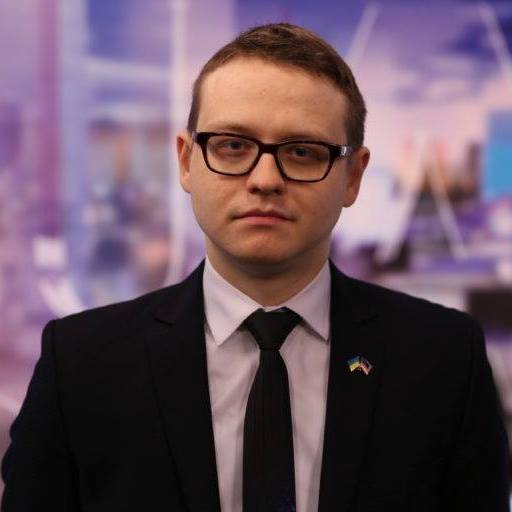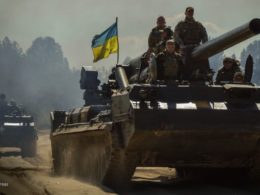After seven months of full-fledged Russian aggression against Ukraine, Putin finally made the move to approve partial military mobilization. How will this affect the course of the Russo-Ukrainian war?
In a nutshell, it won’t, if we’re talking about Russia’s ability to turn the tide of the conflict in its favor and achieve its continually declared maximalist political goals by military means.
And now, the details.
Ukraine’s successful offensive forced Russian forces to switch to defense along the entire frontline
Let’s start by examining the context to understand the impact of Putin’s decision.
As a result of the successful Ukrainian offensive, the Russian forces were forced to retreat along the entire front line, despite their ongoing systematic rocket and artillery fire. The exception is the outskirts of Bakhmut and the Avdiivka-Marinka axis, where Russian forces continue to advance for political rather than military reasons and cannot change the course of the war in Russia’s favor.
Russia’s decision to transition to defense, which means it has completely lost the strategic initiative, reflects one of its critical problems in this war – a shortage of manpower relative to the size of the battlefield.
In the address announcing the partial mobilization, President Putin indirectly acknowledged this by stating that the front of active hostilities has stretched for more than 1,000 kilometers.
Up to 330,000 Russians were involved in the war against Ukraine during the summer of 2022
At the same time, according to Ukrainian estimates, up to 330,000 Russian citizens were involved in the war against Ukraine in the summer of 2022. The Pentagon estimates that up to 85% of all of Russia’s available forces were engaged. Ukraine’s recent offensive in the northeast
highlighted Russia’s lack of troops to maintain the current front line.
Ukraine’s counteroffensive near Kharkiv: what enabled the Balakliia blitzkrieg
On the other hand, official partial mobilization is nothing more than the legalization of partial covert mobilization. The latter began in Russia from the start of its full-scale aggression in February 2022 and included the participation of people with military experience. The dynamics of hostilities at the frontline in the second half of spring and summer 2022 provided evidence that partial covert mobilization did not allow Russia to compensate for troop losses fully or to increase the combat potential significantly.
Another remaining unanswered question is the scope of partial mobilization. The Russian Federation's Minister of Defense provided an estimate of 300,000 people. Although a larger scope is being debated, based on Russia’s formal mobilization potential of approximately 20 million people.
Despite this, several factors cast doubt on the Russian Federation's ability to conduct a large-scale partial mobilization and transform those mobilized into an actual combat force.
Ukraine has successfully mobilized resources through internal non-state initiatives and with assistance from Western nations. Russia is devoid of both options
Ukraine's experience in increasing the capacity of its security and defense forces from 300,000-350,000 to 1 million personnel demonstrates the issues that come with large-scale mobilization: provision, training, and obtaining the necessary set of weapons/equipment.
Ukraine was able to complete the relevant tasks to a large extent thanks to the mobilization of internal resources via non-state initiatives such as the charity fund "Come Back Alive" and others, as well as the assistance of Western countries.
In the case of Russia, both options are lacking. Due to the relevant objective constraints, Russia’s partial mobilization be of a less massive nature than many fear. Otherwise, the quality of the reinforcements, which already left much to be desired, will actually negatively impact Russia’s military positions and morale.
In these circumstances, the announcement of an official partial mobilization should be viewed primarily as an effort to keep the current front line intact. This correlates with the political part of President Putin’s speech on 21 September 2022 regarding support for the bogus referendums in the temporarily occupied Donetsk, Luhansk, Zaporizhzhia, and Kherson oblasts, which are likely to show that these regions “desire” to join Russia.
Russia’s most urgent task is to uphold the currently-occupied territories. Russia's military and political leadership iswell aware that due to losses, depletion, and demoralization, which will only worsen in the winter of 2022–2023, the forces currently deployed on Ukrainian territory may prove unable to hold the current front line by the spring of 2023.

Mykola Bielieskov is a Research Fellow at the National Institute for Strategic Studies under the President of Ukraine and senior analyst of the Come Back Alive Foundation. The expressed views are that of the author only and don't represent the official position of National Institute for Strategic Studies.
Related:
- Putin announced mobilization in Russia
- Ukraine needs long-range missiles to really win the war, country’s top generals say
- Ukraine’s counteroffensive near Kharkiv: what enabled the Balakliia blitzkrieg





